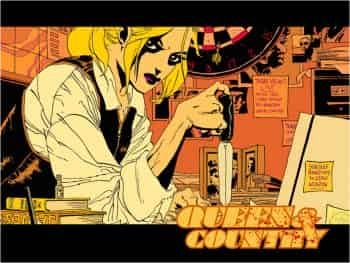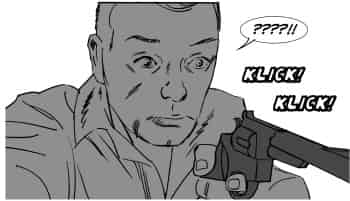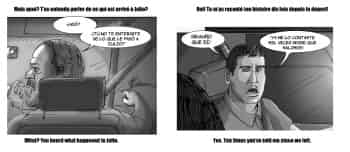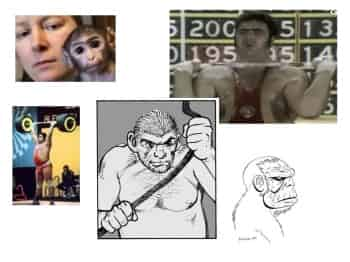Bonus
-
Ideas floating in the air– Part III
We start our stories off by showing the faces and names of the main characters, to help the readers identify the actors in that particular story, but also because the look of the characters may change slightly depending on who is illustrating it. The other benefit of this approach is that it saves us from having to use up panels to present the characters again, allowing us to showcase more direct conversation between them. Recently, while reading a Queen & Country comic book by Greg Rucka (developed by him in the late 2000s), we noticed that it used a similar approach.
Now, let’s talk about the last James Bond film, where the spy’s weapon won’t work if the fingerprints on the hand holding it don’t match the owner’s. We wrote something like this in Divide to Conquer a long time before we saw Skyfall. In our story Grant uses a similar device for his weapon.
What we’re trying to show here is that ideas may be used by several writers without necessarily having been copied. Sometimes this happens by accident, simply because ideas float around in the air at certain times, waiting to emerge. Two writers may have tuned into them at separate times without being aware of it.

-
But what were they saying? (Rise in power)
-
References in the story “At Large”
In “At Large,” Jason makes his way to Vancouver without a penny in his pocket and has to come back in a few days with a certain amount of money. We heard many years ago that Canadian secret service recruits were given such a task.
-
Ideas floating in the air– Part II
A discussion took place on the web about Alan Moore having “borrowed” for a Superman story that was allegedly inspired by Grant Morrison’s Superfolks series. The author of this piece theorizes that Alan Moore may have unconsciously drawn from ideas that had struck him many years before (“Alan Moore and Superfolks Part 2: The Case for the Defence,” comcisbeat.com, November 11, 2012). In our story, “World’s Best Friends,” Benson makes a comment about his father’s upcoming death. It was only months after writing the story that we remembered that the inspiration for that conversation came from a short story in Daniel Poliquin’s collection, Le Canon des Gobelins.
-
References in the story “The Visit”







